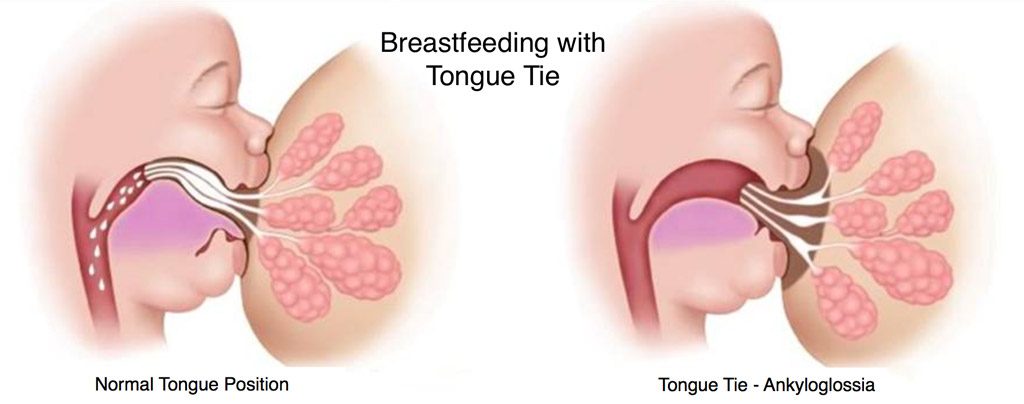Breastfeeding with Tongue Tie or Lip Tie
Problems with breastfeeding is the most common reason that tongue tie and lip tie are identified in infants. Tongue tie and lip tie can often go undiagnosed or the effects on breastfeeding unrealized resulting in early weaning. Both conditions can affect breastfeeding because the baby is unable to latch properly due to the restricting frenulum. Dr. Paul Rubin and Dr. David Sentelle are one of the few pediatric dental surgeons in the Frisco-Dallas-Fort Worth to acquire a laser capable of performing tongue tie and lip tie laser surgery quickly, safely and effectively.

Painful Breastfeeding with Tongue Tie or Lip Tie
Because the babies cannot maintain a secure latch, they often increase suction which results in painful nursing for the mother. Babies with ankyloglossia or lip tie typically have to re-latch multiple times during a feeding, which can significantly prolong each nursing session.
Other signs in your infant that may indicate tongue tie or lip tie include:
- Weight loss or inadequate weight gain
- Clicking sound during nursing (caused by poor suction)
- Colic or irritability
- Gas and/or reflux
- Arching away from breast while nursing
- Sleeping during feeding (tired from difficult nursing)
- Spilling milk due to ineffective seal
- Frequent feedings (not able to intake enough milk at each feeding)
- Biting or chewing during nursing
- Choking, coughing, or gulping while feeding
- Jaw quivering between or after feedings
Tongue tie/lip tie effects on the mother may include:
- Nipple pain or damage (cracks or erosions)
- Low milk supply
- Mastitis (infection of the breast tissue)
- Pinched, creased, or bruised nipples after feeding
- Plugged milk ducts
Mothers may feel frustrated, disappointed, or discouraged because of the inability to successfully breastfeed due to tongue tie or lip tie. Through the use of soft tissue laser surgery, pediatric dentists, such as Drs. Rubin and Sentelle, can effectively release your child’s tongue tie or lip tie, allowing you and your baby to have a more positive and healthful nursing experience. Learn more by reading Breastfeeding After Laser Frenectomy.
Lip Tie and a Gap Maxillary Midline Diastema
An upper lip tie may be the cause of your child’s maxillary midline diastema, or simply put, the gap between the upper front teeth. While over 50% of children between ages 6 and 8 have a maxillary midline diastema, those who also have a lip tie should be monitored closely.
Most orthodontists agree that the 6 permanent, upper front teeth should be fully erupted and then, if necessary, a frenectomy performed in conjunction with an orthodontic evaluation and treatment. If the maxillary labial frenulum is especially prominent, a large gap can occur.
Immediate treatment is not always recommended because scar tissue can hinder the incoming permanent teeth. If orthodontics are utilized and the maxillary midline diastema reoccurs, a frenectomy is usually recommended at this time.
A laser frenectomy can be helpful if:
- The frenulum is causing pain
- Your child is having difficulty swallowing, eating, or speaking
- Normal function is impeded by the frenulum
Keep in mind that an upper lip tie frenectomy is the surgical removal of the upper lip tie, and an upper lip tie release does not remove tissue and is typically performed to assist with breastfeeding difficulties. This procedure is called maxillary labial frenectomy, which involves removing the maxillary labial frenum, tissue connecting the upper lip to the upper gums – often referred to as “lip tie”.
If you feel like your infant or child is being affected by a tongue tie or lip tie and would like to arrange a pediatric dental consultation with a pediatric dentist at Frisco Kid’s Dentistry, please submit an online appointment request or call our office at 214-618-5200.
